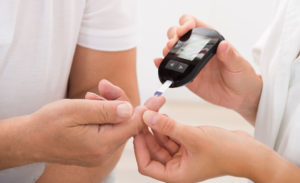News
Stem Cell Therapy developments for Diabetes
06/03/2018
Insulin-producing stem cells provide promising results for treating diabetes
Over 30 million Americans, around 9% of the population, has diabetes. There are over 1.5 million people in the US are diagnosed with the condition every year.
This number is rising every year, and it is understood that people with diabetes struggle to produce enough insulin to function healthily. Insulin is used to regulate the blood sugar level inside the body, so it is vital for a person’s health. Unregulated blood sugar in a person’s body can lead to numerous complications and in some cases, the reaction has been fatal.
The University of Copenhagen, last November, conducted a study where researchers used human stem cells to produce insulin-producing cells that hopefully can then be transplanted into people with diabetes. This was published late last year, in the internationally acclaimed journal Nature Cell Biology.
The Professor and Head of Department Henrik Semb, from the Novo Nordisk Foundation Centre for Stem Cell Biology at the Faculty of Health and Medical Sciences, said: “By identifying the signals that instruct…progenitor cells to become cells that make tubes and later insulin-producing beta cells, we can transfer this knowledge to human stem cells to more robustly make beta cells”.
The research group in Copenhagen originally wanted to study the how the body creates the complex way that fluids and gasses are transported to our major organs.

By doing this research, they hoped to grasp the understanding for progenitor cells (cells that only divide a number of times unlike stem cells which can replicate indefinitely) and work out how they can be used for the trial.
Assistant Professor Pia Nyeng, said “It turns out that the same signal — the so-called epidermal growth factor (EGF) pathway — control both the formation of pipes and beta cells through polarity changes. Therefore, the development of pancreatic progenitor into beta cells depends on their orientation in the pipes. It is a really amazing and simple mechanism, and by affecting the progenitor cells’ so-called polarity we can control their conversion into beta cells”
When a stem cell reforms it depends on their sense of direction, the researchers on the project worked out that that it was possible to turn stem cells, taken from the patient into beta cells, which are the cells that produce insulin. This would mean that diabetic people would have an alternative to using insulin injections.
Henrik Semb, a researcher on the project, said: “Now we can use this knowledge to more efficiently turn human stem cells into beta cells in the laboratory with the hope to use them to replace lost beta cells in patients suffering from diabetes”.
Regulations of cell polarity are expected to be the key to further development of human stem cells. Researches think this will contribute to the development of stem cell therapy to target as diseases such as diabetes.
If you want more information on how you can protect your child’s future health by banking their cells, get in touch with our friendly team today or order your free information pack.
